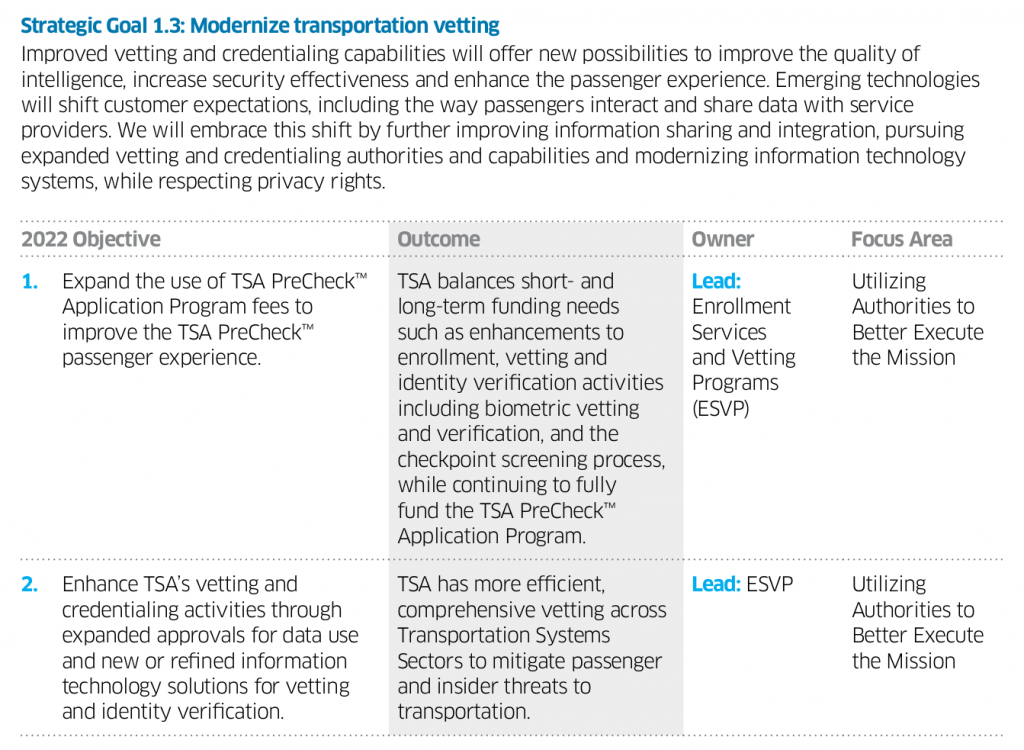TSA wants more authority for ID demands, “vetting”, and data use
The Transportation Security Administration (TSA) wants more power to require ID from travelers (“credentialing”), control who is and who is not allowed to exercise their right to travel (“vetting”), and use and share information about travelers with more third parties and for more purposes (“expanded data use”).
These TSA priorities for the next two years are included in a 2020 update released today to the 2018 implementation road map for the TSA and White House long-term strategic plans for travel surveillance and control.
TSA Administrator David Pekoske’s oddly-named “Intent 2.0” strategy update also prioritizes “biometric vetting and [identity] verification”, a “near-contactless experience” at TSA checkpoints, and “vetting as a service”.
The “near-contactless experience” would be achieved, it appears, not through reduced hands-on groping or fewer demands for ID, but through increased use of remote sensing such as facial recognition.
“Vetting as a service” refers to allowing airlines, airport operators, and perhaps other government agencies and/or commercial third parties to use the TSA’s databases of profiles, risk scores, travel histories, free-text comments in reservations by travel industry workers, unverified aggregated derogatory data form other sources, and biometric and other identifiers for their own purposes. This not only expands the potential adverse impact of arbitrary secret algorithmic profiling based on secret databases, but gives airlines a financial incentive to carry out facial-recognition surveillance on the TSA’s behalf in order to get a free ride to use the TSA’s identification/vetting service for business process automation, personalization (including personalized pricing), or other purposes.
None of the TSA’s strategy documents say how the TSA hopes to acquire “expanded vetting and credentialing authorities” or “expanded approvals for data use”. Will the TSA seek to have these included in new laws? Or will to try to grant itself wider authority through rulemaking or press releases, as it has often done in the past?
At least now we know, if we didn’t already, what to watch out for from the TSA in the months and years ahead.
